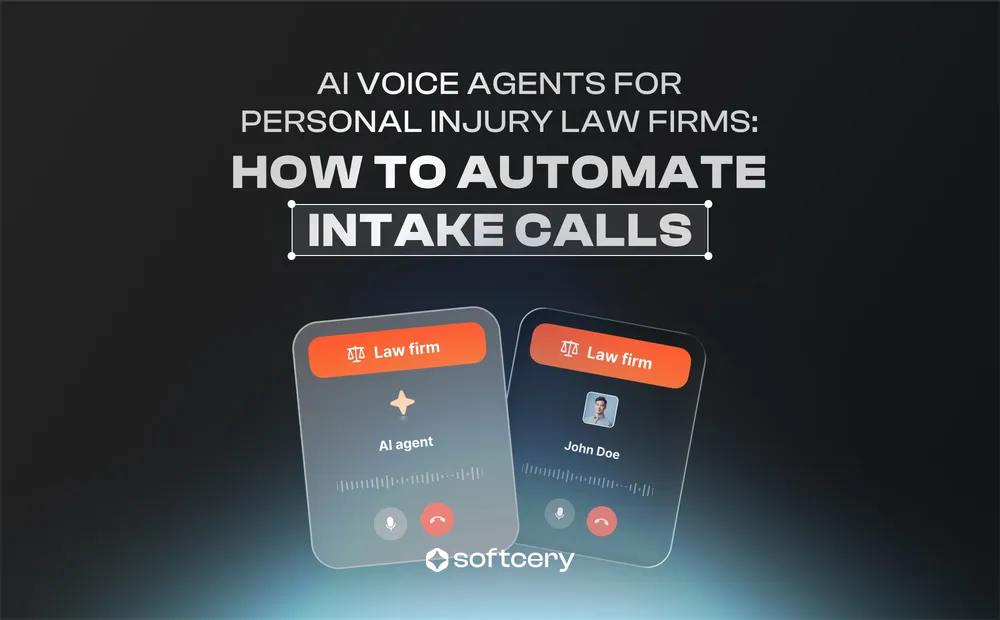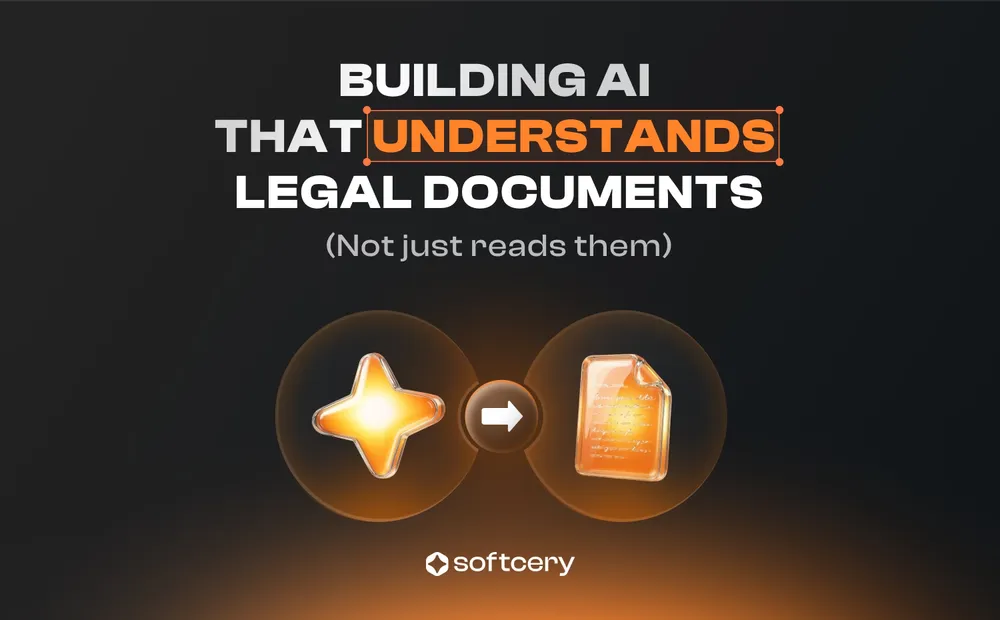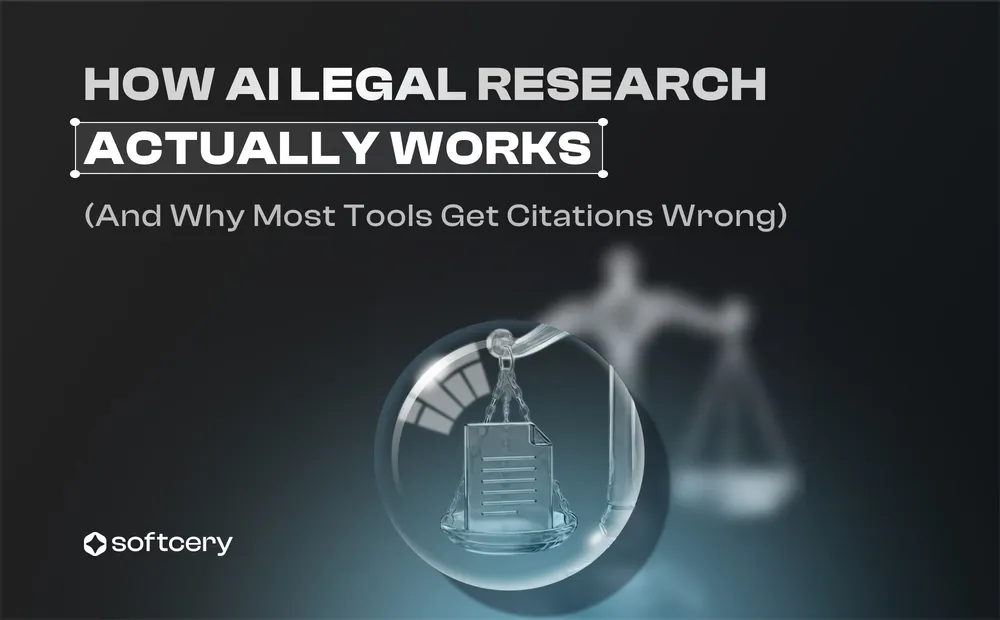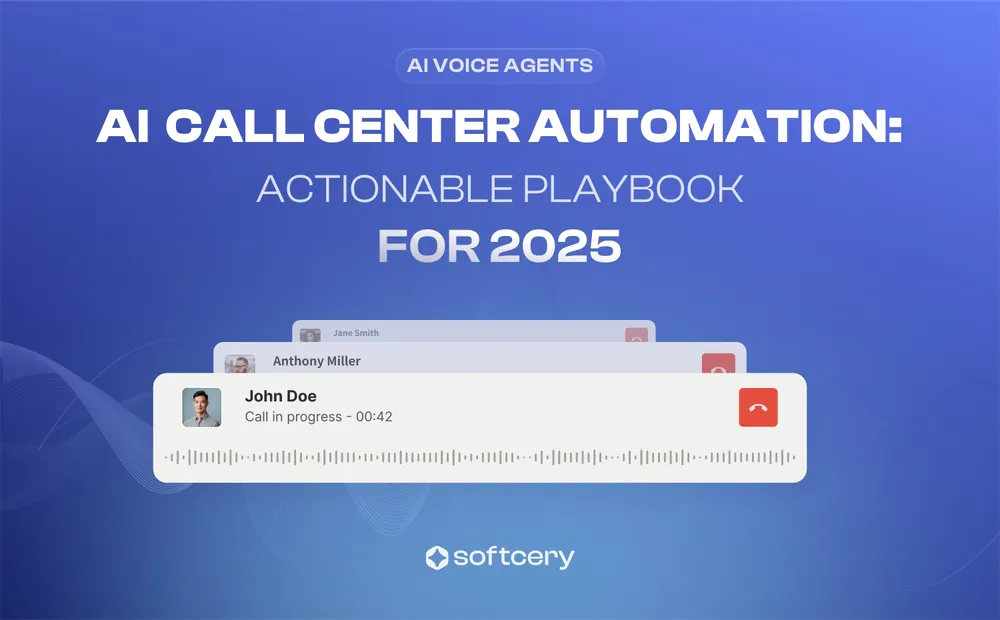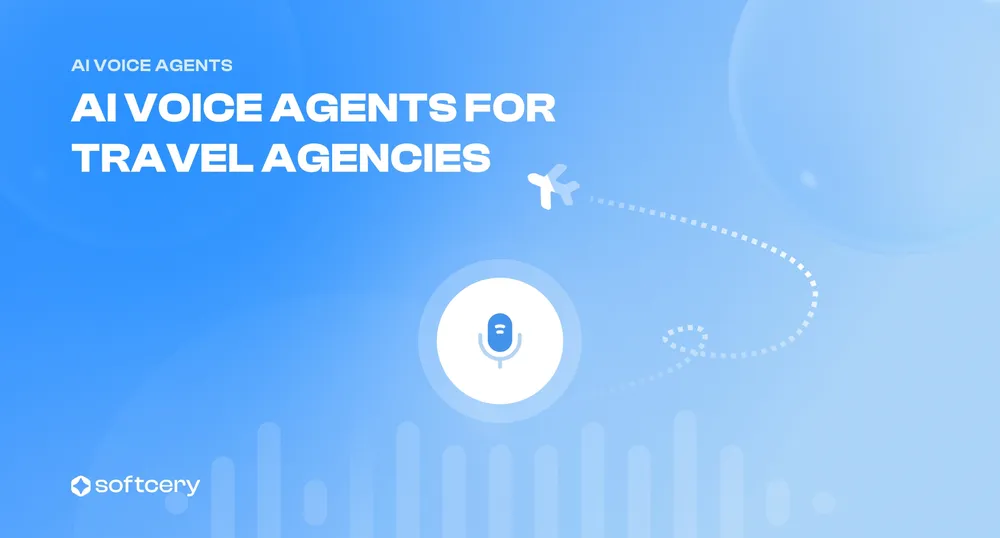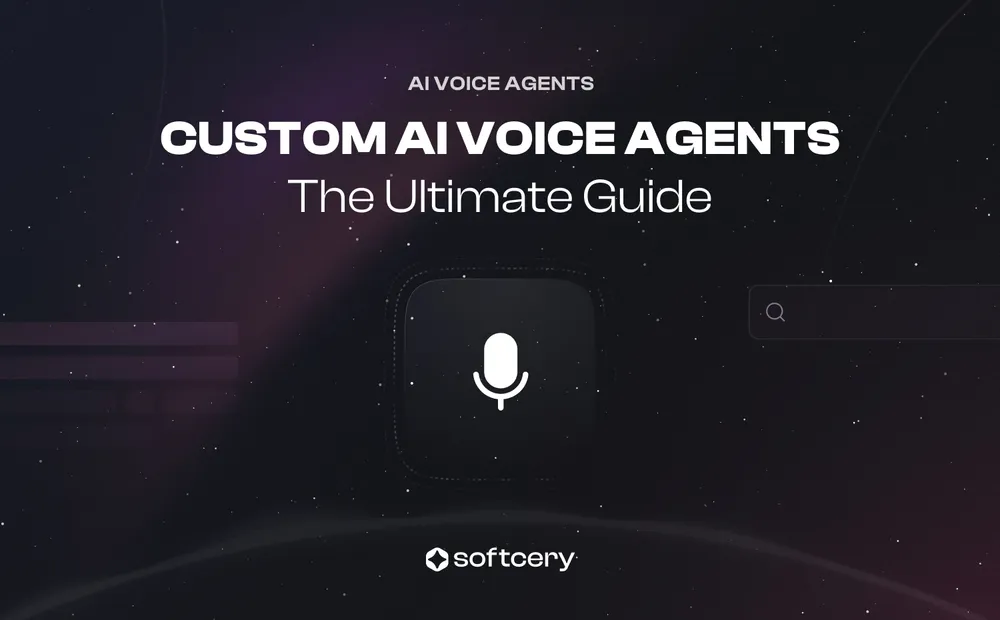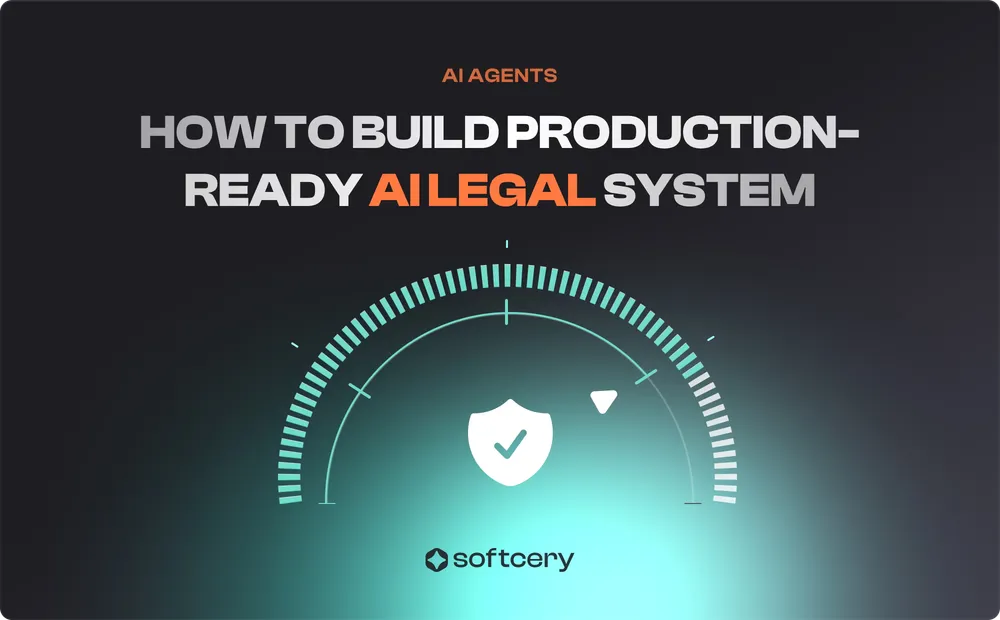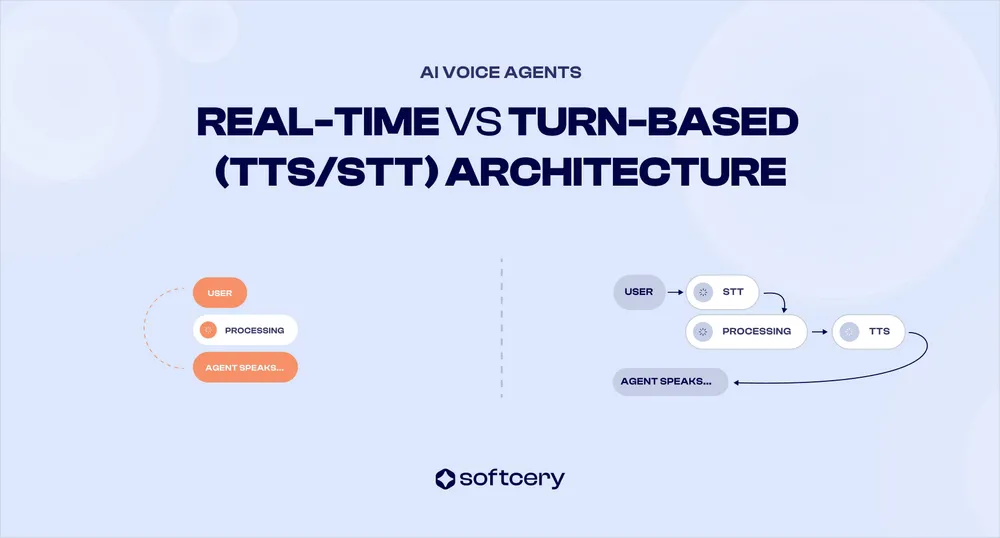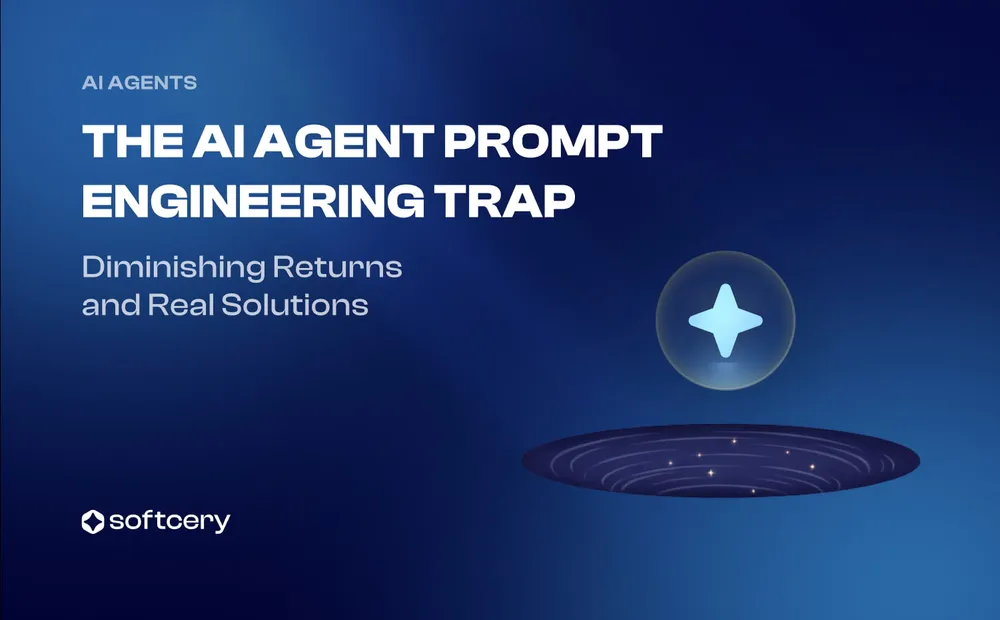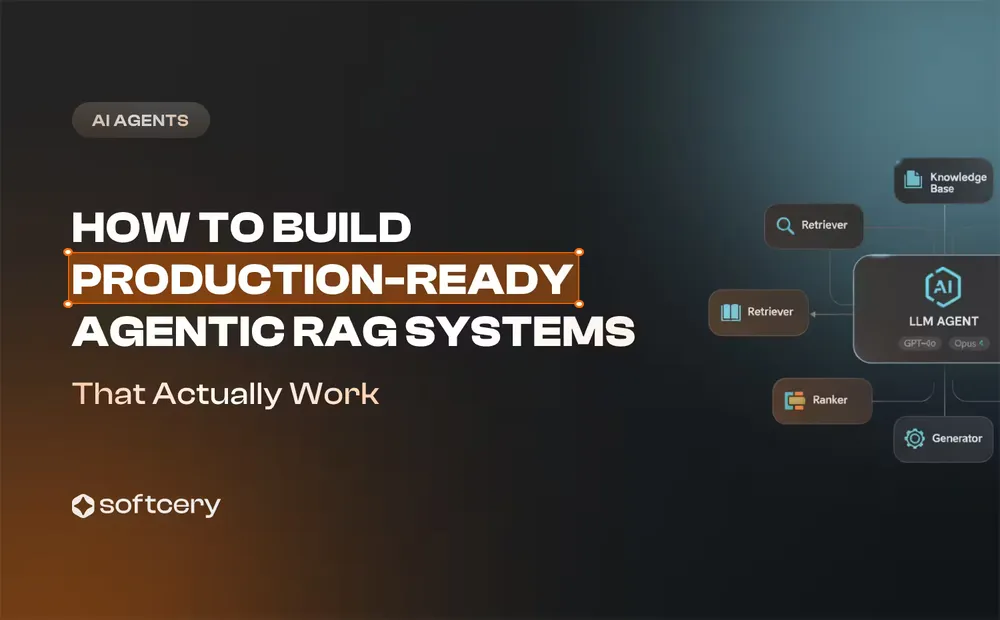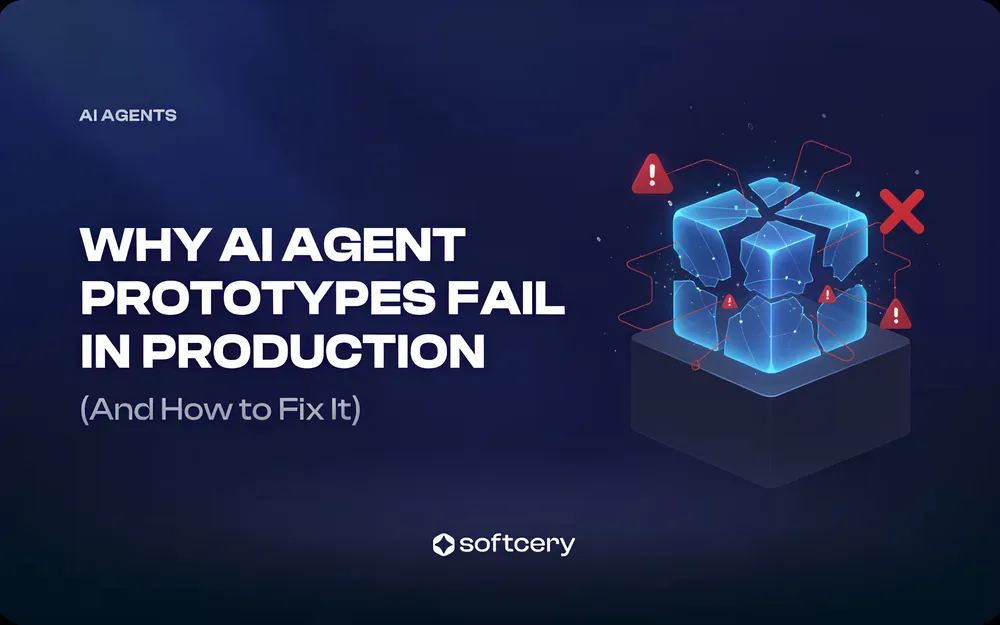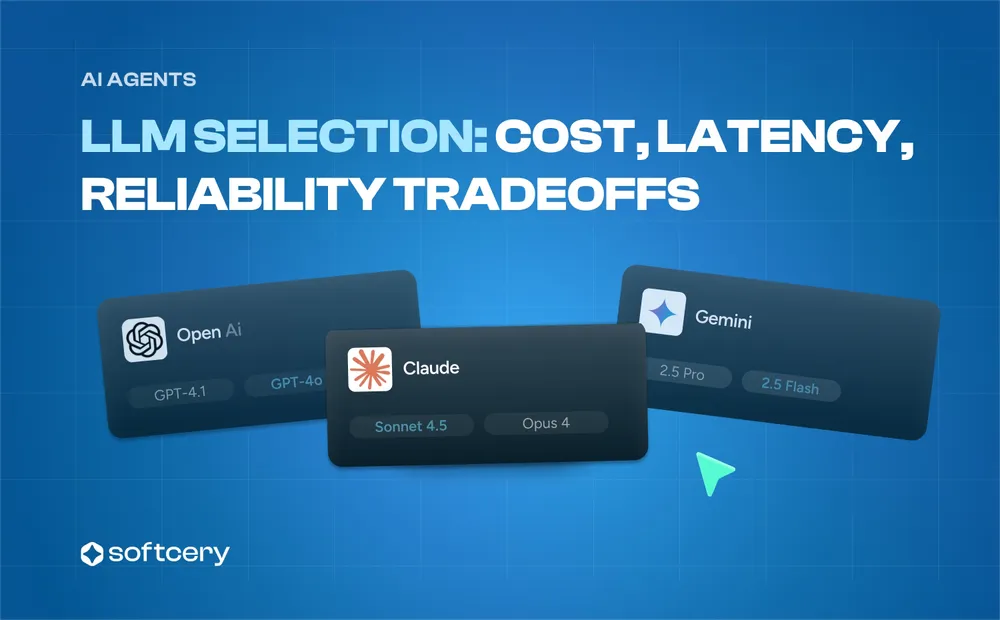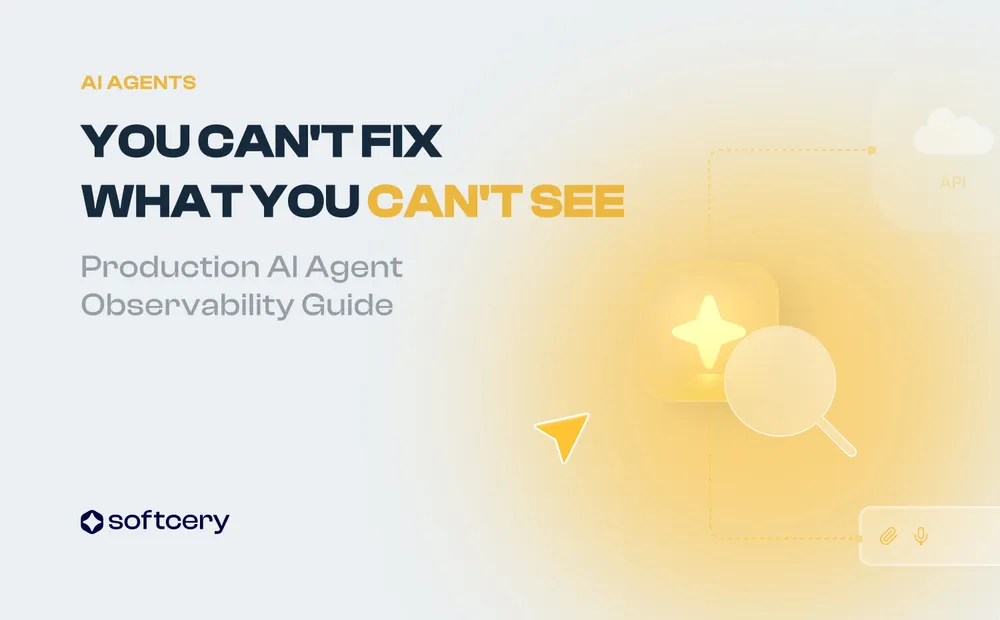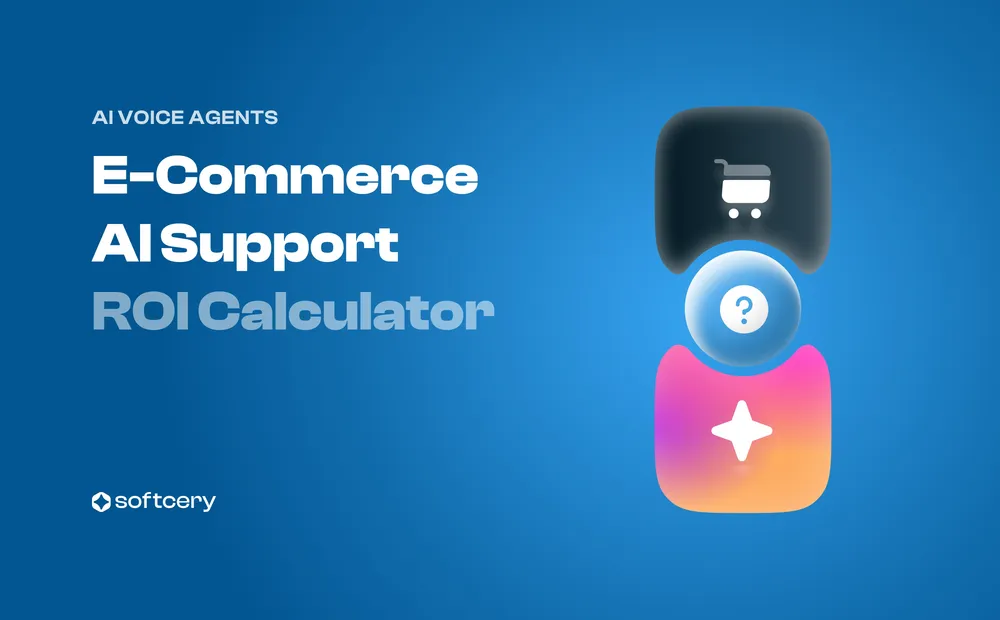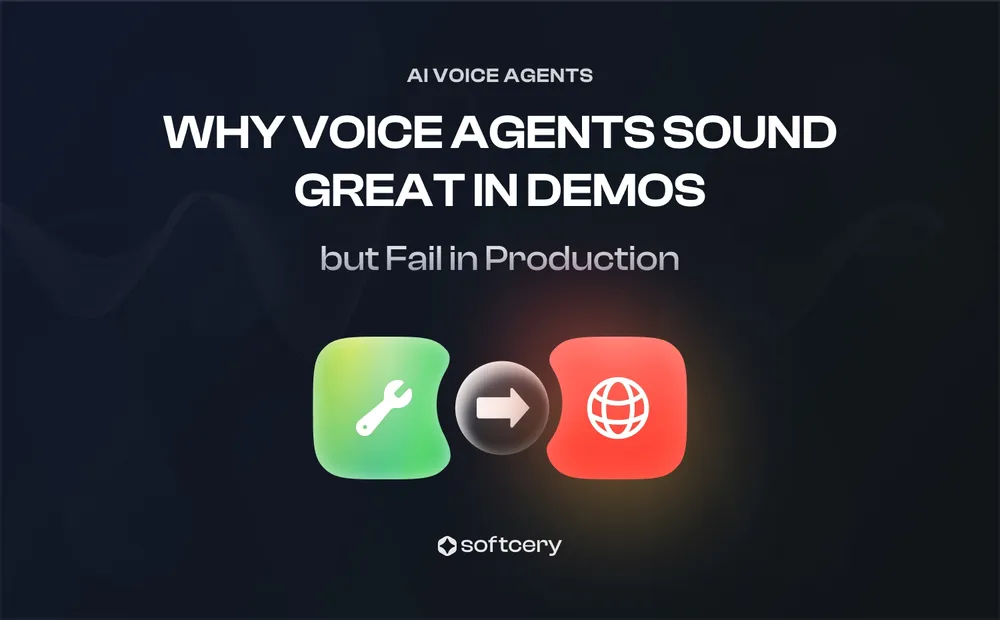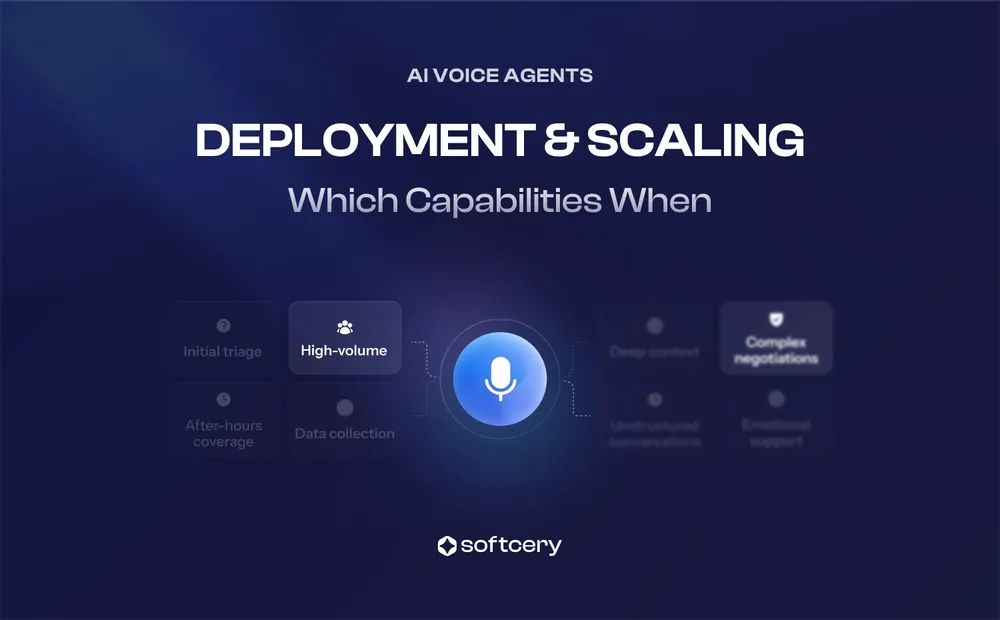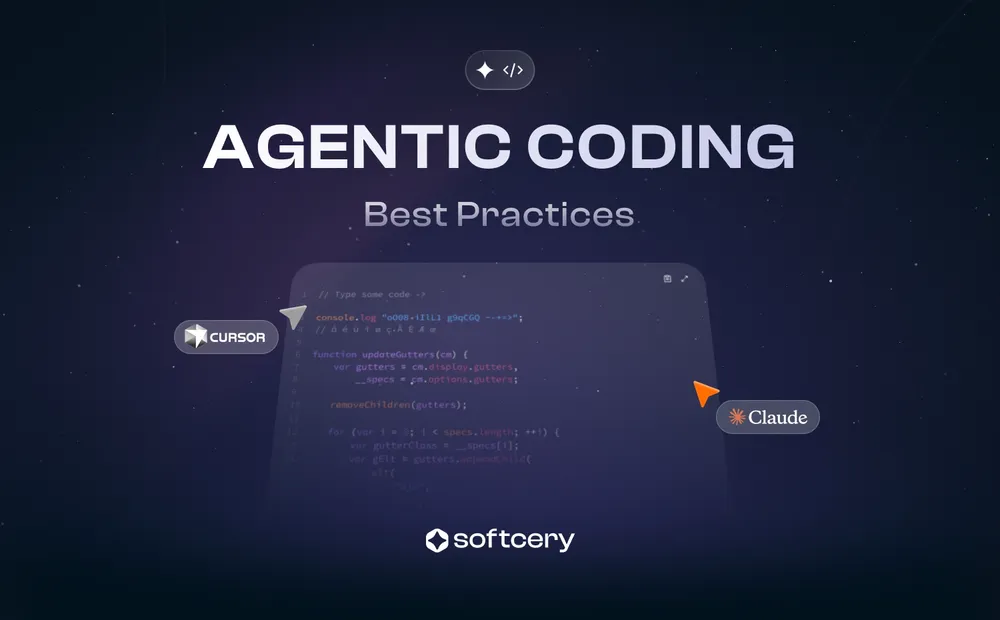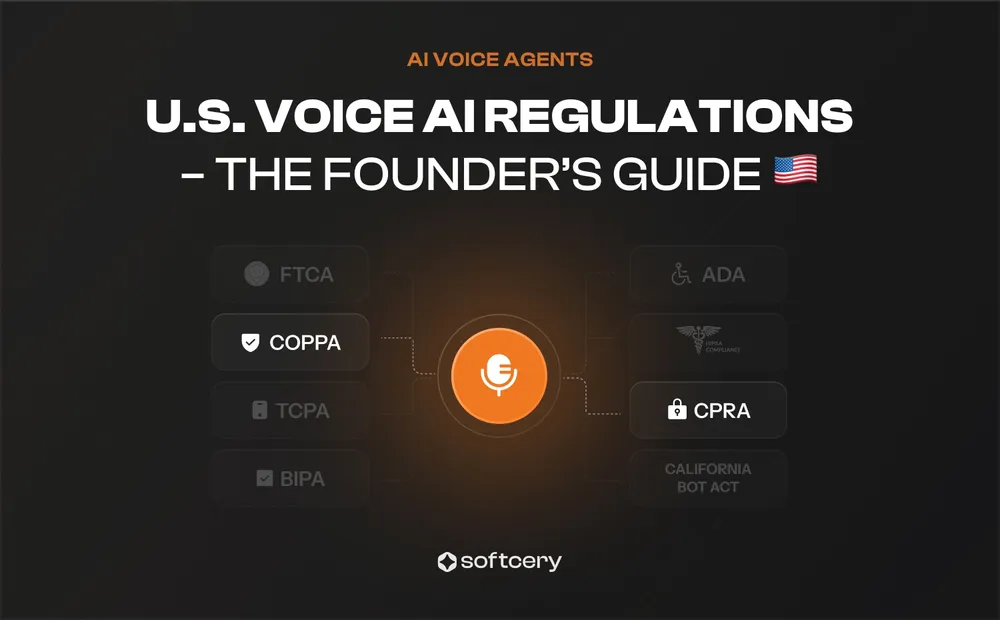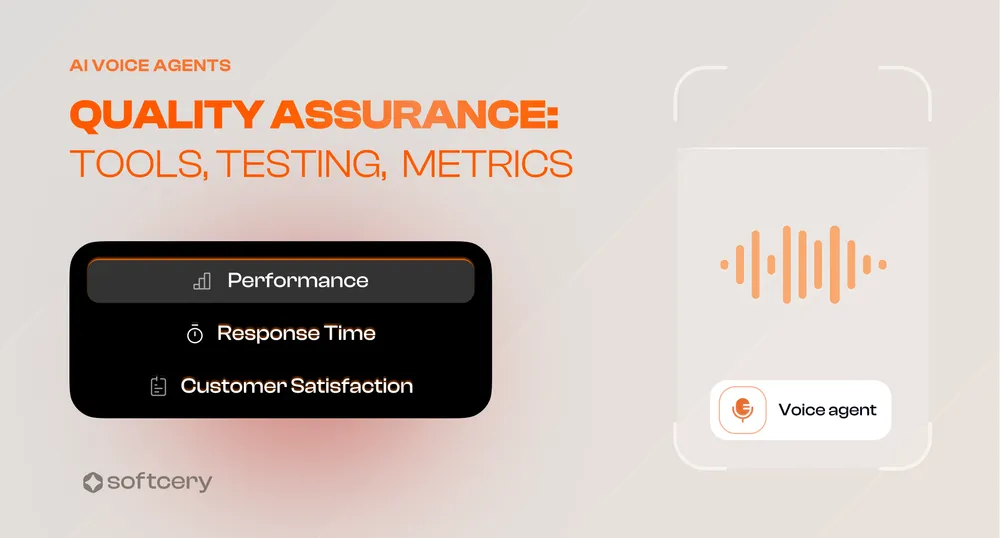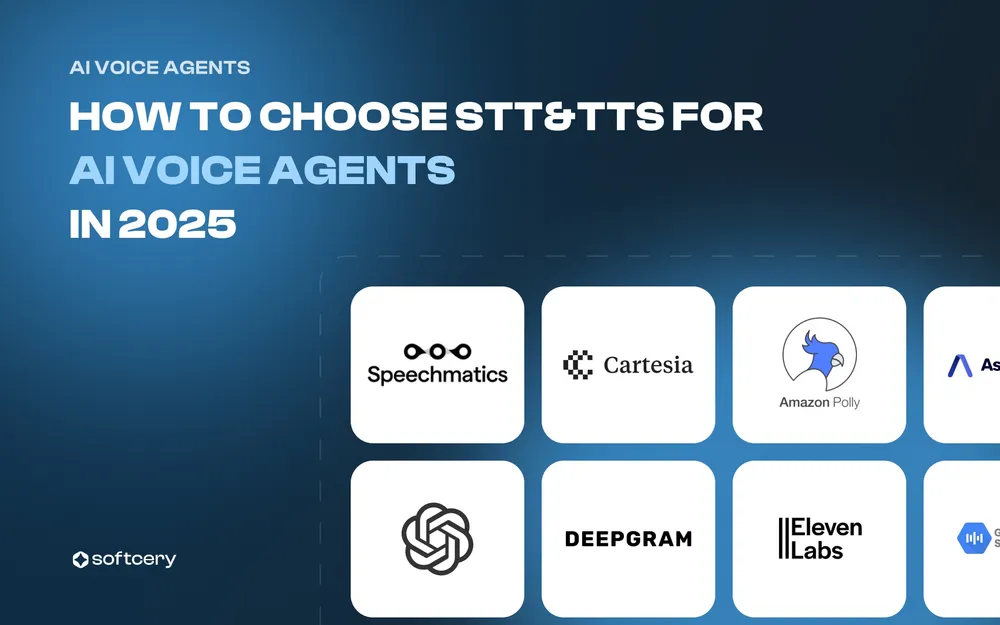Choosing an LLM for Voice Agents: Speed, Accuracy, Cost
Last updated on October 24, 2025
With a growing number of LLMs available - ranging from proprietary models like OpenAI’s GPT-4o and Anthropic 3.7 Sonnet to open-source alternatives such as Meta’s LLaMA 3.3 - businesses must carefully evaluate their options. Factors like response latency, throughput, cost per token, hosting flexibility, and functional capabilities all play a crucial role in determining the best-fit model for a given use case.
What Are Large Language Models (LLMs), and Why Are They Important for Voice AI?
Large Language Models (LLMs) are advanced neural networks trained on massive amounts of text data, enabling them to process, understand, and generate human-like responses in natural language. These models leverage deep learning architectures, such as transformers, to predict text based on input prompts, making them incredibly versatile for various AI-driven applications.
In the context of voice AI, LLMs play a fundamental role in ensuring smooth, intelligent, and context-aware conversations. Unlike traditional voice assistants that rely on predefined scripts or rigid rule-based systems, LLM-powered AI voice agents can:
- Comprehend context and intent;
- Generate human-like responses;
- Follow complex instructions;
- Handle dynamic, real-time interactions;
- Support multilingual communication.
Why Are LLMs Critical for Voice AI?
AI voice agents must process and generate responses within milliseconds to maintain a seamless real-time conversation. TTFT (Time to First Token) measures how long it takes for an AI model to generate the first symbol of its response after receiving a query. MMLU (Massive Multitask Language Understanding) is a benchmark that evaluates an AI model’s ability to understand and answer complex questions across multiple subjects, including math, law, medicine, and general knowledge.
The choice of LLM directly impacts:
- Response speed (latency) - Faster models, like Gemini Flash 2.5 (Sep) (0.37s TTFT) and GPT-4.1 Mini (0.42s TTFT), allow near-instant interactions.
- Accuracy and coherence - A high MMLU score (e.g., 85.9% for Sonnet 4.5) ensures the model can handle complex queries with logical consistency.
- Cost-effectiveness - Businesses processing millions of voice interactions monthly need cost-efficient models like Gemini Flash 2.5 (Sep) ($0.10 per million input tokens) vs. GPT-4.1 ($3.50 per million tokens blended).
Now that we’ve covered the role of LLMs, let’s put it into context.
Key Challenges in Selecting an LLM for AI Voice Agents and Their Business Impact
Choosing the right large language model (LLM) for an AI voice agent is a strategic decision that directly affects customer experience, operational costs, and scalability. Unlike traditional chatbots, voice agents require real-time processing, seamless dialogue management, and accurate responses, making the selection process complex. Below, we explore the most critical challenges and their direct impact on business operations.
Demystifying LLM Selection: The Key Metrics That Matter
Latency & Performance Metrics
For voice assistants, responsiveness is critical. Latency directly affects the conversational flow: a slow response can feel unnatural or frustrating to users. We focus on Time to First Token (TTFT) and Tokens per Second (TPS) (generation throughput). All the models support streaming output, meaning they can start speaking before the full answer is generated, which is essential for real-time voice.
| Model | TTFT (seconds) | Throughput (TPS) | Notes on Real-Time Behavior |
|---|---|---|---|
| Gemini Flash 2.5 (Sep) | 0.37 | 156–233 | Ultra-low latency; best for real-time customer support and call centers. |
| GPT-4.1 Mini | 0.42 | 61 | Lightweight and fast; great for high-volume, latency-sensitive applications. |
| GPT-4o (Mar) | 0.42 | 157 | Fast streaming; excellent balance of latency and quality responses. |
| Llama 4 Maverick | 0.43 | 124 | Open-source option; extremely fast and cost-efficient for self-hosting at scale. |
| Kimi K2 0905 | 0.46 | 74 | Low latency with strong agentic capabilities; good for interactive chat. |
| Grok 4 Fast | 0.52 | 182 | Fast throughput with 2M context window; suitable for long-form conversations. |
| DeepSeek-R1 | 0.56–1.11 | 222–368 | High throughput; performance varies by provider and hardware configuration. |
| GPT-4.1 | 0.66 | 72 | Fast streaming with excellent balance of latency and quality responses. |
| Claude Haiku 4.5 | 0.77 | 98 | Twice as fast as Sonnet 4.5; ideal for high-volume production applications. |
| Claude Sonnet 4.5 | 2.07 | 70 | Fits complex AI voice agents; latency may be bottleneck depending on use case. |
Business Impact of Latency
In real-world deployments, lower latency has direct benefits for user engagement and efficiency. Users are more likely to continue interacting when responses are prompt - a delay beyond about one second can start to feel awkward, and indeed studies show that delays over 1 second can frustrate users in voice interactions. Especially in customer-facing scenarios (e.g. a support hotline), shaving even a second off response times can yield measurable improvements in satisfaction. For instance, McKinsey industry report found that a one-minute increase in average call handle time leads to a 10% drop in customer satisfaction scores.
While our focus is on seconds or fractions of a second per response, it all adds up: when AI agents respond in seconds or fractions of a second, they resolve queries faster, which shortens call times and reduces customer wait times. Faster responses also lower operating costs: if an AI agent works 10–20% faster due to low latency, it can handle more calls or free up human agents sooner, improving overall contact center efficiency.
Accuracy & Coherence Metrics
We assess each model’s accuracy, knowledge depth, and coherence using standardized benchmarks: MMLU, GPQA, and IFEval. These metrics gauge how well the LLM can handle complex questions and follow instructions:
- MMLU (Massive Multitask Language Understanding) evaluates the model on 57 diverse subjects (from history to science exams). It’s a proxy for world knowledge and reasoning ability. Higher MMLU (%) means the model answers more questions correctly across these topics, indicating broad expertise.
- GPQA (Graduate-Level Google-Proof Q&A) presents extremely challenging questions (often college or grad-level problems in sciences) that aren’t easily solved by memorization or a quick web search. This tests the model’s advanced reasoning and problem-solving.
- IFEval (Instruction-Following Evaluation) measures how well the model follows complex instructions and produces the desired output format. This covers understanding user intent, adhering to requested formats, and coherence in following multi-step directions.
| Model | MMLU (%) | GPQA (%) | IFBench (%) | Notes |
|---|---|---|---|---|
| Claude Sonnet 4.5 | 86 | 73 | 43 | Strong instruction following; excellent for complex AI agents. |
| Kimi K2 0905 | 82 | 77 | 42 | Very strong reasoning; great for agentic applications. |
| Gemini Flash 2.5 (Sep) | 84 | 77 | 44 | Balanced accuracy with ultra-low latency; ideal for real-time. |
| Llama 4 Maverick | 81 | 67 | 43 | Open-source option with solid overall accuracy. |
| GPT-4.1 | 81 | 67 | 43 | Strong benchmark results; reliable for mixed workloads. |
| GPT-4.1 Mini | 78 | 66 | 38 | Cost-effective with moderate accuracy; good for high-volume apps. |
| GPT-4o (Mar) | 80 | 66 | - | Balanced latency + accuracy; widely adopted in real-time AI. |
| Claude Haiku 4.5 | 80 | 65 | 42 | Fast with good accuracy; ideal for high-volume applications. |
| Grok 4 Fast | 73 | 61 | 38 | Good throughput; suitable for long conversations with large context. |
| DeepSeek-R1 | 82–84 | 66–75 | 41–43 | Performance varies by provider; strong reasoning capabilities. |
The most reliable models - Claude Sonnet 4.5, Gemini Flash 2.5 (Sep), and Kimi K2 0905 - score the highest in benchmarks, with MMLU scores around 82-86%, meaning they perform at nearly expert levels in understanding and answering complex questions. These models also follow instructions well, with Claude Sonnet 4.5 leading in structured and precise responses for complex AI agents.
Business Impact: Why Accuracy Matters
- Finance: Mistakes in AI-generated advice on loans, interest rates, or transactions can lead to compliance issues and financial losses. Banks typically use high-accuracy models and validate responses with real-time data sources or human review.
- Healthcare: AI in medical support must be highly reliable. Even the best models (~80% accuracy) can still make errors, so they should be used to assist, not replace human professionals. A voice agent might draft an answer, but a curated medical database or human expert should verify before providing final information.
Cost Analysis
Pricing per Million Tokens
Each model has different pricing, especially the proprietary ones offered via API. The table below summarizes the API usage costs (in USD per 1 million tokens processed). “Input” refers to prompt tokens and “output” refers to generated tokens. For reference, 1 million tokens is roughly 750k words (about 3,000-4,000 pages of text).
| Model | Context Window | API Price (per 1M tokens) | Notes |
|---|---|---|---|
| Gemini Flash 2.5 (Sep) | 1M | $0.30 (input), $2.50 (output) | Ultra-low latency with competitive pricing; ideal for high-volume. |
| GPT-4.1 Mini | 1M | $0.40 (input), $1.60 (output) | Cost-effective with good performance; great for latency-sensitive apps. |
| Grok 4 Fast | 2M | $0.20 (input), $0.50 (output) | Massive context, competitive pricing; good for long conversations. |
| Llama 4 Maverick | 1M | $0.26 (input), $0.85 (output) | Open-source; hosting lowers cost at scale; flexible deployment. |
| Kimi K2 0905 | 256k | $0.99 (input), $2.50 (output) | Affordable with strong agentic capabilities; good value. |
| DeepSeek-R1 | 128k | $0.28 (input), $0.42 (output) | Very low cost; performance varies by provider configuration. |
| GPT-4o (Mar) | 128k | $5.00 (input), $15.00 (output) | Balanced speed + accuracy; widely adopted real-time option. |
| GPT-4.1 | 1M | $2.00 (input), $8.00 (output) | Strong performance with large context; good for mixed workloads. |
| Claude Haiku 4.5 | 200k | $1.00 (input), $5.00 (output) | Fast and affordable; ideal for high-volume production applications. |
| Claude Sonnet 4.5 | 1M | $3.00 (input), $15.00 (output) | Strong reasoning; excellent for complex AI agents despite higher cost. |
Context Window Impact or Input Length
The context window determines how much conversation history or documents the model can consider at once. Larger context is a double-edged sword: it enables more sophisticated use cases (feeding entire knowledge bases, long dialogs, etc.), but it can dramatically increase token consumption (and thus cost) if you always stuff the maximum context. On the flip side, if your voice agent needs to handle, say, a long customer call with hundreds of exchanges, a model with a large context window can maintain far more context of the conversation than a model limited to 8k tokens (which might equate to only a few pages of text or a few minutes of dialogue). This means fewer instances where the AI has to say, “I’m sorry, I forgot what we discussed earlier.”
API vs. Self-Hosting: Which is More Cost-Effective?
Using a managed API (OpenAI, Anthropic, Google, etc.) means you pay per token, which is easy to manage and automatically scales as your usage grows. Self-hosting an LLM means running it on your own servers or cloud machines,so you avoid token fees but pay for the infrastructure instead. The cost trade-off depends on usage volume:
- For low to moderate usage, APIs are often cheaper and easier (you don’t pay for idle time, and don’t need MLOps engineers to maintain the model). There’s also no large up-front investment.
- For very high usage, self-hosting can save money in the long run. But the general point stands: at large scale, owning the means of generation can be more cost-efficient.
There’s a middle ground: using managed cloud services like AWS Bedrock (which offers pay-per-token access to Claude, Llama, and other models) or spinning up your own instances on AWS/GCP to self-host open-source models like LLaMA. With Bedrock, you get the convenience of pay-per-use pricing similar to direct APIs, but with additional enterprise features like VPC integration and data residency controls. For self-hosting on cloud infrastructure, you’re paying for GPU hours—if you keep the GPUs busy close to 24/7 with generation, the effective token cost can approach the theoretical hardware cost. If the GPUs sit idle much of the time, then you’re better off sticking to usage-based API pricing where you only pay for what you use.
Another consideration is rate limits and scaling. Many API providers have request quotas. For example, OpenAI’s GPT-4o has tiered limits up to 10,000 requests per minute and 30M tokens per minute for top enterprise plans. These are quite high, but a large call center or voice assistant platform needs to be mindful of them.
Use our AI voice agent calculator to get a clear monthly estimate based on your model, usage, and setup.
Deployment Factors: Cloud vs. Self-Hosted, Security & Scalability
Selecting an LLM for enterprise deployment involves more than just model quality; infrastructure, data security, compliance, and scalability are equally critical considerations.
Cloud-based APIs (OpenAI, Anthropic, Google, etc.):
Pros: Easiest to integrate (simple API calls), no ML ops burden, and providers optimize the model’s performance for you. They also handle scaling. If your voice agent’s call volume spikes, the cloud service can accommodate (within your rate limit) by allocating more compute. Updates and improvements to the model are delivered automatically.
Cons: Ongoing cost per use, potential data privacy concerns (since user queries are sent to a third-party server), and dependence on the provider’s uptime and policies. While major providers have strong security, some organisations are uneasy sending sensitive data off-site. Compliance requirements can be a barrier - for example, a healthcare company may be legally restricted from using a cloud AI unless certain certifications are in place. There’s also less flexibility: you can’t customize the model beyond what the API allows.
Self-hosting (on-prem or private cloud):
Pros: Full control over data (nothing leaves your servers, which aids privacy and regulatory compliance), and potentially lower marginal cost at scale as discussed. You can also customize the stack - for instance, run real-time voice ASR (speech recognition) and the LLM on the same machine to minimize latency, or fine-tune the model on proprietary data. It also allows using open-source models that aren’t available via API. Data residency and sovereignty concerns are alleviated since you decide where the system runs (important for EU GDPR, which requires controlling cross-border data flow; self-hosting lets you keep data in-country).
Cons: You now assume responsibility for operations and security. An open-source model server, like any sensitive system, can leak data or face attacks if it’s not set up securely. Maintaining uptime, applying model updates, and scaling the system are non-trivial tasks requiring skilled engineers. There is also the hardware cost and maintenance - running a fleet of GPUs or specialized AI accelerators. If your usage is sporadic or low-volume, those resources might sit idle (still costing money). And while open models give freedom, they might not reach the absolute performance of the best proprietary models yet; there’s often a quality gap to consider.
Security & Compliance
All major cloud LLM providers have taken steps to alleviate data privacy concerns. OpenAI, Google, and Anthropic state that API data is not used to train their models (unlike consumer-facing free services). OpenAI even offers a “zero data retention” mode for enterprises where they don’t store API prompts at all. Microsoft Azure OpenAI service will sign a BAA (Business Associate Agreement) for HIPAA compliance in healthcare and ensures data is siloed to specific regions. These measures mean using a closed model via API can meet strict requirements, but it relies on trusting the vendor and legal safeguards. Some organizations, especially in finance and government, still prefer that sensitive data never leaves their own infrastructure - hence a tilt toward open-source models they can deploy internally.
Scalability
Cloud APIs abstract this - you just need to watch your rate limits. For high-throughput scenarios, you may have to request higher quotas or pay for enterprize tiers. Self-hosting requires scaling out infrastructure. The good news is LLM workloads scale horizontally, so if you need to handle N concurrent calls, you can run N (or fewer, if each can handle multiple threads) instances of the model. Tools like Kubernetes or auto-scaling groups in cloud can spin up more instances when load increases. The latency difference is that cloud API calls might go to geographically load-balanced servers, whereas if you self-host in one region, global users might experience more network latency (unless you deploy servers in multiple regions). For a voice agent, this is usually minor compared to generation time.
Fine-tuning and Customisation
Many providers now allow limited fine-tuning of the models. For example, OpenAI allows fine-tuning GPT-4.1 and GPT-4.1 Mini (with some restrictions). Anthropic does not yet allow fine-tuning Claude Sonnet 4.5 or Claude Haiku 4.5, but AWS Bedrock has introduced a feature to fine-tune select models including Claude (with guardrails). Open-source models like Llama 4 Maverick can be fine-tuned freely on your data, which is a big plus if you need the model to learn domain-specific terminology or style (e.g., fine-tuning Llama 4 Maverick on your company’s past support transcripts to better handle industry-specific vocabulary).
When you fine-tune a closed model through an API, your custom dataset is sent to the provider. Make sure the data isn’t used to retrain the provider’s base model (typically, it isn’t). Fine-tuning usually creates a separate model instance that’s only accessible to you.
Important: Fine-tuning is complex, resource-intensive, and requires significant expertise to get right. For most domain-specific use cases, follow this recommended approach:
- Start with prompt engineering and context augmentation - Provide relevant domain-specific information directly in the prompt. This is the simplest and fastest approach for most scenarios.
- Move to RAG (Retrieval-Augmented Generation) - If you have a large knowledge base, implement RAG to dynamically retrieve and inject relevant context into prompts. This scales better than stuffing everything into the prompt.
- Consider fine-tuning only as a last resort - Fine-tuning should be reserved for cases where the model fundamentally needs to learn new patterns, terminology, or behavior that can’t be achieved through prompting or RAG. It requires substantial training data (typically thousands of examples), computational resources, ongoing maintenance, and expertise to avoid degrading the model’s general capabilities.
Tool Integration and Function Calling
Many voice agents need the LLM to interface with external systems (booking appointments, fetching account info, etc.). All major models discussed in this guide—including GPT-4.1, Claude Sonnet 4.5, Claude Haiku 4.5, Gemini Flash 2.5, and open-source models like Llama 4 Maverick—now support function calling and structured output generation natively. This means they can reliably output JSON, call predefined functions, and interact with external APIs as part of their standard capabilities.
For voice agent applications, function calling enables the LLM to:
- Query databases for customer information
- Book appointments or update calendars
- Process transactions or check account balances
- Retrieve real-time data (weather, stock prices, etc.)
- Trigger workflows in CRM or ticketing systems
The quality of function calling varies by model, with Gemini Flash 2.5 (Sep) (44% IFBench), Claude Sonnet 4.5 (43% IFBench), and GPT-4.1 (43% IFBench) offering the most reliable structured outputs based on their high instruction-following scores.
Implementation Strategies for AI Voice Agents
Now that we’ve analysed the key performance metrics, costs, and business impact of different LLMs, the next step is to focus on how to effectively implement AI voice agents using these models. Successful deployment requires careful consideration of model selection, performance optimisation, system integration, security, and continuous improvement.
Integrating AI Voice Agents with Business Systems
For AI voice agents to be truly effective, they must seamlessly integrate with existing business systems. This includes customer databases, CRMs, and support ticketing platforms.
- CRM integration allows AI to retrieve customer history and personalize responses, improving engagement;
- ERP and order management systems enable AI to check order status, process refunds, or update customer records in real-time;
- Function calling and API integration let AI trigger automated actions, such as scheduling appointments or fetching account details.
For voice-based AI to interpret user requests correctly and sound natural, it’s critical to choose the right Speech-to-Text (STT) and Text-to-Speech (TTS) solutions. See our comprehensive STT and TTS selection guide comparing 13 providers with latency benchmarks, accuracy metrics, and cost analysis.
Measuring Success and Continuous Improvement
AI voice agents require ongoing optimisation to maintain high-quality interactions. Businesses should track key performance indicators (KPIs) to evaluate effectiveness:
- Accuracy and coherence - how well the AI understands and responds to inquiries;
- Response time - measuring delays between user input and AI-generated responses;
- Customer satisfaction - evaluating feedback to determine if users find AI interactions helpful;
- First-call resolution rate - analyzing how many queries are resolved without escalation to human agents.
To improve performance over time, businesses should continuously monitor AI-generated interactions, analyse customer feedback, and refine AI responses. This might involve updating prompts, fine-tuning models, or introducing new automation workflows based on observed usage patterns. For comprehensive guidance on monitoring and debugging AI agents in production, including tracing, evaluation frameworks, and tool comparisons, see our observability guide. For voice-specific testing methodologies and quality metrics, see our voice agent testing guide.
Key Considerations for a Successful AI Voice Agent Deployment
By following these strategies, businesses can ensure their AI deployments are both scalable and cost-effective while maintaining a high standard of user experience.
- Align model selection with business needs - fast models for simple tasks, highly accurate models for complex interactions;
- Optimize token usage - use only the necessary context to control costs and speed up responses;
- Ensure seamless system integration - connect AI voice agents with internal databases, CRMs, and APIs to enable automated workflows;
- Prioritize security and compliance - ensure that sensitive customer data is handled according to regulatory requirements;
- Monitor, measure, and refine AI performance - use real-time analytics and customer feedback to improve AI interactions over time.
Use our AI voice agent calculator to model technology, throughput, and expenses based on your chosen LLM and deployment strategy.
Your AI Voice Agent Roadmap
If you’re considering AI voice agents but aren’t sure how to begin, you’re not alone. The key to a successful implementation is starting small, testing results, and scaling efficiently.
Follow this simple roadmap to guide your business through the AI voice agent implementation process:
- Define your use case: Identify where AI can add the most value (customer support, sales, finance, etc.).
- Choose the right LLM: Match your needs with models that balance speed, accuracy, and cost.
- Integrate with your systems: Connect AI with your CRM, ticketing platform, or database for seamless automation.
- Optimize for performance: Reduce latency, improve accuracy, and track performance metrics.
- Test and scale: Start with a pilot, refine your approach, and expand AI adoption based on real results.
Which LLM Should You Choose for Your AI Voice Agent in 2025?
Whether you prioritize real-time responsiveness, enterprise-grade accuracy, or cost-effective self-hosting, the right choice depends on your specific business needs. Let’s summarize the best models for different use cases and help you make an informed decision.
| Model | Best For | Cost Efficiency | Ideal Use Cases |
|---|---|---|---|
| Gemini Flash 2.5 (Sep) | Best balance of speed and accuracy | Very High | Omnichannel customer service, technical support, real-time assistants |
| GPT-4.1 | Strong performance with large context | Moderate | Mixed workloads, enterprise applications, complex queries |
| DeepSeek-R1 | Very low cost with strong reasoning | Very High | High-volume applications, experimentation, cost-sensitive deployments |
| GPT-4.1 Mini | Fast and cost-efficient real-time interactions | Very High | Customer support, sales assistants, latency-sensitive applications |
| Claude Haiku 4.5 | Fast with good accuracy at affordable price | High | High-volume production, professional services, customer support |
| Kimi K2 0905 | Strong agentic capabilities with good value | High | Interactive chat, complex workflows, agentic applications |
| Llama 4 Maverick | Open-source, self-hosting for maximum privacy | Very High (self-hosted) | Finance, healthcare, government, or privacy-first enterprises |
| Grok 4 Fast | Very large context (2M) with competitive price | High | Legal document analysis, contract review, long customer calls |
| Claude Sonnet 4.5 | Premium reasoning for complex AI agents | Low | Complex enterprise workflows, advanced reasoning, regulated industries |
| GPT-4o (Mar) | Widely adopted with proven reliability | Moderate | Enterprise customer service, established production systems |
LLM choice determines how your voice agent thinks and responds. The complete picture includes platform selection, STT/TTS configuration, observability, compliance frameworks, cost management, and scaling infrastructure. Get the full production framework in our AI Launch Plan covering all seven systems needed to ship voice agents that work reliably under production call volumes and edge cases.
About Softcery: We’re the AI engineering team that founders call when other teams say “it’s impossible” or “it’ll take 6+ months.” We specialize in building advanced AI systems that actually work in production, handle real customer complexity, and scale with your business. We work with B2B SaaS founders in marketing automation, legal tech, and e-commerce—solving the gap between prototypes that work in demos and systems that work at scale. Get in touch.
Frequently Asked Questions
The best LLM depends on your priorities—speed, accuracy, or cost. For real-time, high-volume interactions, low-latency models like GPT-4o-mini or Gemini 2.5 Flash Lite are ideal. If accuracy and reasoning matter most, enterprise-grade models such as Claude 3.7 Sonnet, Gemini 2.5 Pro, or GPT-5 are stronger choices. Open-source options like LLaMA 3.3 are best if you need full data control or self-hosting.
The key metrics are TTFT (Time to First Token), which measures how fast a model starts responding, and TPS (Tokens per Second), which measures how quickly it generates output. For natural, real-time conversations, latency under 1 second is ideal. Accuracy benchmarks such as MMLU, GPQA, and IFEval help compare reasoning and instruction-following ability across models.
It depends on your usage volume. For smaller or moderate workloads, managed APIs (like OpenAI or Anthropic) are usually cheaper and easier since they scale automatically and require no infrastructure management. At large scale, self-hosting can lower long-term costs—but you’ll need to manage servers, GPUs, and security in-house.
Major providers like OpenAI, Anthropic, and Google state that API data isn’t used to train their base models. Fine-tuning usually creates a separate, private model instance for your organization. For stricter compliance or data sovereignty needs, self-hosting ensures all data stays within your own infrastructure.
You can use our AI voice agent calculator to estimate monthly expenses. It factors in model type, token usage, and deployment strategy (API vs. self-hosted) so you can forecast both performance and operational costs before launching your system.
See exactly what's standing between your prototype and a system you can confidently put in front of customers. Your custom launch plan shows the specific gaps you need to close and the fastest way to close them.
Get Your AI Launch Plan